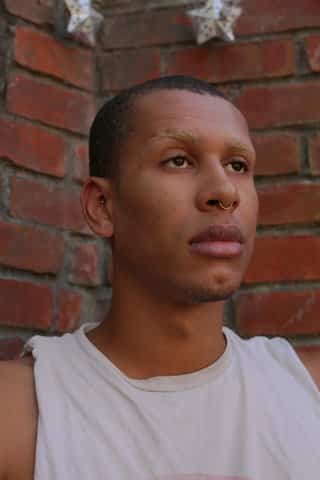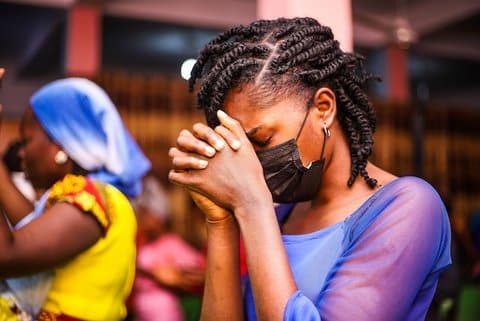
05 Sep Not Black, Not White. Just Biracial

Jacob Marshall is a mixed-race aspiring artist who grew up and still lives in Alameda. (Amaya Edwards)
By Amaya Edwards
Mixed children with Black and white parents are confronted with racist attitudes practically from the day they are born. Jacob Marshall couldn’t even go into public with their mom as a child without getting dirty looks from other people.
Marshall, an aspiring artist whose pronouns are they/them, was born in Castro Valley to Megan and Sanford Marshall, a white woman and Black man. After living in San Lorenzo, their parents decided to move the family to Alameda, where they still live, to give their two children a safer place to grow up.
Being mixed-race is something that can help or hurt you in the world, depending on what race you “look like,” based on which parent you physically take after. Although Marshall, 22, is mixed, that is not how people typically perceive them. Because of their physical features, such as their skin tone and hair, Marshall is often seen as a tall, Black man when they walk down the street.
From a young age, Marshall felt confused about their mixed-race identity. Being both Black and white can be especially confusing growing up in a city like Alameda, which is predominantly white. It’s the classic case of being “too Black” for the white kids and “too white” for the Black kids.
“In Alameda … everyone knows each other so that plays another role [in it], so you don’t want to act a specific way, and the norm is gonna lean towards ‘white behavior’ and a white line of thinking and talking,” Marshall said.
At points, growing up mixed could be exhausting for them.
“I would over-explain myself and — I don’t know; I feel like if you’re going to be mixed in a more predominantly white area, you’re gonna be socialized as white pretty much,” Marshall said.
Moving through the world as a young mixed person can be especially uncomfortable during middle and high school.
Marshall was bullied in middle school, specifically for being Black — by people they had been hanging out with. When Marshall entered ninth grade at Alameda High, they were still dealing with ignorance and racism.
One day during freshman year, Marshall was wearing an oversized, thrifted flannel that they thought was cute and “grungy.” They were with a group of people just hanging out after school on Park Street, making jokes. One of the people in the group thought it was funny to say that Jacob “looked like a slave” with the flannel on.
Marshall said that not only made them feel bad, it confused them as well.
These experiences had a direct effect on Marshall’s journey to becoming comfortable with their identity, not only as a Black mixed person but also as someone who is queer.
“I think over time you just sort of become more aware that [your white friends] are not your allies at the end of the day, and they will say things to demean you in racial ways, and they can always go there,” Marshall said. “And I felt like that was kind of just interesting to see and have it where it’s like a conditional sort of allyship if you’re acting the right way.”
For Marshall, identifying as mixed is synonymous with being Black, and they find Black identity easier to describe than what it feels like to identify as white.
“Black feels like it’s much more specific,” Marshall said. “There are like movies and your own experiences and different things like that, that feel so much more pointed and reflect on the experiences of what it’s like being Black … It feels more solid. I am white, but it’s not as much of a feeling.”
When looking at race relations in the Bay Area, Marshall has a hard time seeing how things can change for the better here or nationwide.
“When I think of race relations,” Marshall said, “I just think of people talking about racism and figuring that out and how to live near other people that are different from them and actually accept it and be into it, and I don’t think that will ever happen.”
This resource is supported in whole or in part by funding provided by the State of California, administered by the California State Library in partnership with the California Department of Social Services and the California Commission on Asian and Pacific Islander American Affairs as part of the Stop the Hate program. To report a hate incident or hate crime and get support, go to CA vs Hate.






No Comments